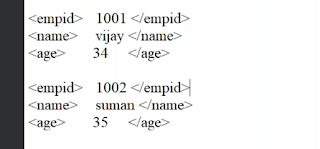Mastering SAP Module Pool Programming: Creating Interactive Applications in SAP Environment
- It is also called as dialog Programming.
- It is a pool of modules ( Screens, Includes, Transactions etc. ).
- A Module Pool is mainly a pool of screens.
- Module pool programming in SAP involves creating interactive applications that allow users to interact with the SAP system through screens (also known as dynpros). These screens are designed using the Screen Painter tool and are typically linked together to form a sequence of interactions known as the flow logic.
- Here's a more detailed explanation of module pool programming:
- Screen Design: Module pool programming begins with designing screens using the Screen Painter tool provided by SAP. The Screen Painter allows developers to visually design the layout of the screen by adding UI elements such as input fields, pushbuttons, checkboxes, radio buttons, and labels. Developers can also define the attributes and properties of these UI elements, such as their size, position, and behavior.
- Flow Logic: Each screen in a module pool program has associated flow logic, which determines the sequence of events and actions that occur when the screen is displayed and interacted with by the user. The flow logic consists of various events that are triggered during the lifecycle of the screen, such as Process Before Output (PBO), Process After Input (PAI), and Process On Value Request (POV). Developers write ABAP code to implement the logic for these events, including data retrieval, validation, processing user input, and navigation between screens.
- Data Handling: Module pool programs often involve working with data stored in the SAP system. Developers write ABAP code to retrieve data from the database, display it on the screens, allow users to modify it, and save changes back to the database. Data handling in module pool programming includes tasks such as reading and writing data from and to database tables, performing calculations, and displaying dynamic content on the screens.
- User Interaction: Module pool programs provide a user-friendly interface for users to interact with the SAP system. Users can input data, make selections, and trigger actions using the UI elements on the screens. Developers implement event handling logic to respond to user actions, such as button clicks or input field changes, and perform the necessary processing based on the user's input.
- Integration: Module pool programs can integrate with other SAP modules and functionalities, allowing for seamless communication and data exchange between different parts of the SAP system. Developers can call function modules, BAPIs (Business Application Programming Interfaces), and other ABAP objects to perform specific tasks or access data from external systems.
- Transaction Codes: Once developed, module pool programs are assigned transaction codes in the SAP system, allowing users to easily access them using the SAP GUI (Graphical User Interface) or other interfaces. Transaction codes provide a shortcut for users to launch specific applications or processes within the SAP system.
- Error Handling and Validation: Developers implement validation checks and error handling mechanisms to ensure data integrity and provide a smooth user experience. This includes validating user input to ensure it meets specified criteria, handling errors gracefully, and displaying meaningful error messages to users when problems occur.
Module pool programming is a powerful tool for creating custom applications and extensions within the SAP environment, allowing organizations to tailor their SAP systems to meet specific business requirements and improve user productivity.
Requirements :-
We will create two screens 100 and 200, We will navigate to 200 screen from 100 screen and vice versa :-
Steps :-
i) Create a module pool program from ABAP editor,
PROGRAM ZAR_MODULE_POOL , In case of executable program it is visible as REPORT.
ii) Click on object list, it will navigate to SE80.
iii) Write click on the program and create two screens ‘0100’ as Header details and ‘0200’ as Item details.
Note :-
Every screen has three parts :-
→ Attributes :- It gives the generic information of that screen.
→ Element List :- It provides the list of elements available on that screen.
→ Flow Logic :- It’s purpose is to write the logic.
iv) We will create a logic in flow logic of screen 0100.
v) Uncomment the PBO portion and create a button HADER in the application toolbar.
vi) Repeat the above steps for ‘0200’ screen also.
Module Pool events :-
i) PBO ( Process Before Output ) :- This event called before displaying a particular screen.
ii) PAI ( Process After Input ) :- This event called after performing some action on a particular screen.
iii) POV ( Process on Value Request ) :- This event called when we click F4 on a field of a screen.
iv) POH ( Process on Help Request ) :- This event called when we click F1( Technical information ) on a field of screen.
F4 Help :-
→It tells us what are the various possible values for any input field.
F1 Help :-
→ It gives us the technical information of any field/column.
Parts of GUI Status :-
PF-STATUS → ( Personal Functions )
→ Menu Bar
→ Function Keys
→ Title Bar
→ Application Toolbar
Running of Our Module Pool Program :-
- We cannot run our module pool program independently, we always require a transaction code to run our module pool program.
- Either go to SE93 or right click on the program→ Create → transaction. → give short description → choose first radio button → press enter.
- Click on save and now you can use this transaction code and navigate between both the screens.









.png)
.png)

Comments
Post a Comment